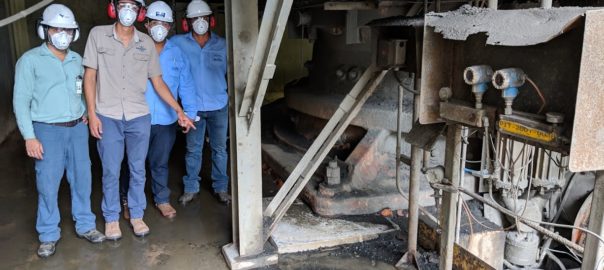With in-person training curtailed for the foreseeable future due to COVID-19 restrictions, Martin Engineering says it has developed an extensive array of tools to continue its tradition of educating those who maintain, manage and design conveyors for industrial operations.
The result is a wide range of globally-available options to help improve safety and efficiency, reduce maintenance expenditures and extend equipment life, ultimately contributing to greater profitability, it says.
“The pandemic has impacted our ability to teach traditional classes at customer sites,” PE Todd Swinderman, CEO Emeritus of Martin Engineering and an industry veteran with more than 40 years of hands-on experience, said. “But it doesn’t reduce the need for conveyor operators and facility managers to obtain the benefits and continuing education credits those sessions provide.”
In response to the restrictions that the virus has placed on face-to-face learning, Martin has created a series of interactive online modules based on the same non-commercial curriculum it has produced over the years. Designed to keep attendees engaged and organised into 90-120 minute segments, the virtual classes cover topics such as best practices for safety, fugitive material control and belt tracking. Upon completion, attendees are eligible to receive either Professional Development Unit (PDU) or Continuing Education Unit (CEU) credits.
“The Foundations™ online seminars deliver non-commercial, topic-specific problem-solving information that can be put to immediate use,” Swinderman said. “There’s no sales pitch, and even the most remote locations can take advantage,” he added.
Customer Development Manager, Jerad Heitzler, an instructor of Martin’s safety workshops since 2010, said: “Conveyors are one of the best productivity-enhancing tools available, but conveyor injuries cost employers millions of dollars annually. Because of the size of their material cargoes, the speed of their operation, and the amount of energy they consume and contain, conveyors have been shown to be a leading cause of industrial accidents, including serious injuries and fatalities. But injuries are preventable with the right training, preparation and safety precautions.”
According to Heitzler, the company’s preferred platform is Zoom, but its expert trainers also have experience with Google Meet, Microsoft Teams and Webex.
“Our platform has been built to increase attendee engagement as much as possible,” Heitzler added. “Many trainers don’t use the available platform features effectively, because they were thrust into online training as a result of the pandemic. But we’ve worked hard at using engagement features to increase learner participation, with options such as a raise hand button, chat, Q and A, screen sharing, white boards, private breakout rooms and polling.”
Heitzler said the Martin team has taught around 2,000 attendees using video conferencing since the onset of the virus.
“We’ve presented these modules to learners in coal handling plants, cement manufacturing, aggregate production and pulp and paper mills,” he said. “We’ve also provided training for industry consultants, service providers and engineering firms who design conveyors and plants.”
Swinderman estimates the firm has trained more than 50,000 miners, operators, maintenance staff and management personnel around the world.
There are two standard tracks: one for maintenance and operations personnel that stresses safe work practices and solutions to common conveyor problems, and one designed for technical and management personnel that emphasises the design and operation of conveyors for safety and productivity. In addition, Martin trainers and engineers can custom design programs not only for customers using conveyors but for those needing training on the application of industrial vibration, air cannons and silo cleaning.
“Both methods of training are highly interactive, effective and non-commercial, focusing on delivering timely information that can be put to immediate use,” Swinderman concluded.








